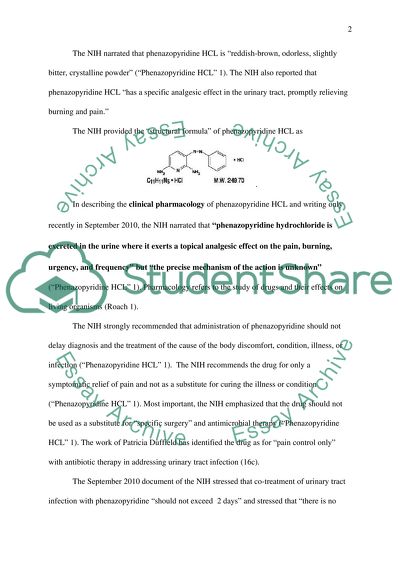Cite this document
(“Study of Phenazopyridine Term Paper Example | Topics and Well Written Essays - 1500 words”, n.d.)
Study of Phenazopyridine Term Paper Example | Topics and Well Written Essays - 1500 words. Retrieved from https://studentshare.org/health-sciences-medicine/1435298-study-of-phenazopyridine
Study of Phenazopyridine Term Paper Example | Topics and Well Written Essays - 1500 words. Retrieved from https://studentshare.org/health-sciences-medicine/1435298-study-of-phenazopyridine
(Study of Phenazopyridine Term Paper Example | Topics and Well Written Essays - 1500 Words)
Study of Phenazopyridine Term Paper Example | Topics and Well Written Essays - 1500 Words. https://studentshare.org/health-sciences-medicine/1435298-study-of-phenazopyridine.
Study of Phenazopyridine Term Paper Example | Topics and Well Written Essays - 1500 Words. https://studentshare.org/health-sciences-medicine/1435298-study-of-phenazopyridine.
“Study of Phenazopyridine Term Paper Example | Topics and Well Written Essays - 1500 Words”, n.d. https://studentshare.org/health-sciences-medicine/1435298-study-of-phenazopyridine.


